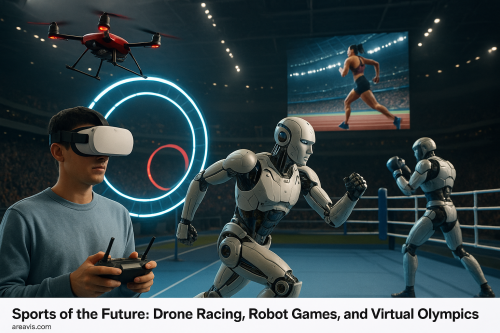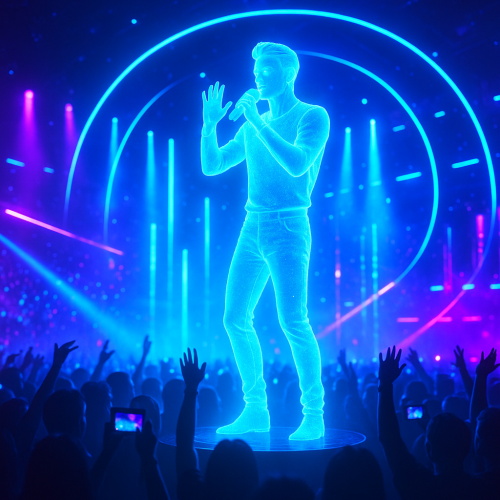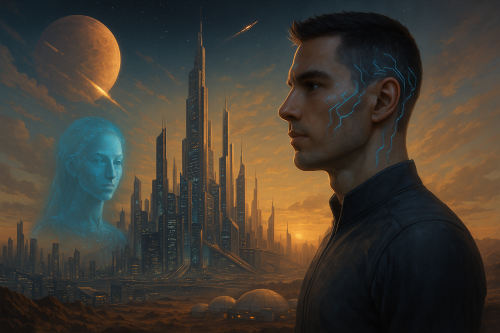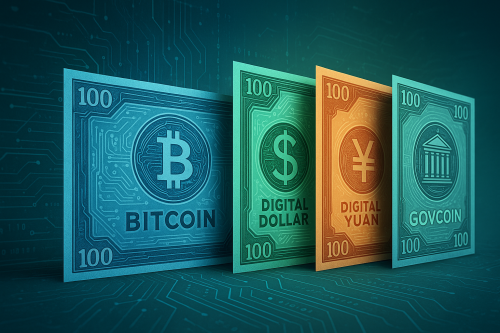The way people search for information online is undergoing a seismic shift. Traditional search engines like Google, Bing, and Yahoo have long been the go-to tools for finding answers on the internet. However, fewer and fewer users rely on these platforms as AI-powered alternatives gain traction. But what is causing this decline? What does the future hold for search engines? And will AI-driven chats replace search engines entirely? Let’s explore these pressing questions.
Why Are Fewer People Using Traditional Search Engines?
1. Rise of AI-Powered Assistants
The emergence of AI chatbots such as ChatGPT, Google Bard, and Microsoft Copilot has given users instant, conversational answers without sifting through multiple search results. Instead of clicking through pages of links, users can now receive precise, well-structured responses in seconds.
2. Search Quality Concerns
Many users have expressed frustration with traditional search engines due to increasing spam, SEO-optimized but low-quality articles, and an overabundance of ads. Search results are often cluttered with paid advertisements, making it difficult to find genuine, useful information.
3. Growing Popularity of Social Media as a Search Tool
Platforms like TikTok, Instagram, and Reddit are becoming alternative sources of information. Younger users, in particular, prefer searching for product reviews, recommendations, and even news on social media rather than traditional search engines.
4. Personalized and Direct Responses
AI-driven tools provide more tailored answers, understanding user intent better than keyword-based search engines. Instead of browsing multiple sources, users can get a direct answer that fits their specific query.
The Future of Search Engines: Adapt or Disappear?
1. AI Integration into Search Engines
Tech giants are already incorporating AI into their search engines. Google’s Search Generative Experience (SGE) aims to blend AI-generated responses with traditional results, while Microsoft Bing integrates AI-powered chat features. This hybrid approach might be the future of search.
2. Voice Search and Conversational AI
Voice search is becoming more prevalent with smart assistants like Siri, Alexa, and Google Assistant. As AI improves, users may prefer spoken queries over typing, pushing search engines to become more conversational and intuitive.
3. More Subscription-Based or Ad-Free Models
To combat ad overload and spam, search engines might introduce premium, ad-free experiences. This shift could lead to better quality search results for paying users while free users continue seeing ad-heavy content.
4. A Decline in Traditional Websites?
As AI chatbots summarize information, fewer people may visit individual websites, leading to decreased traffic for online publishers. Content creators and businesses may need to adapt by optimizing content for AI-driven searches rather than traditional SEO.
Will AI Replace Search Engines Completely?
While AI-driven chats are revolutionizing information retrieval, search engines are unlikely to disappear entirely. Instead, they will evolve. AI chats are excellent for direct answers but lack the ability to explore multiple perspectives, in-depth research, or real-time updates. A combination of AI chat and traditional search is the most probable future.
The landscape of online search is changing rapidly. While fewer people rely on traditional search engines due to AI advancements, declining search quality, and the rise of social media as a search tool, search engines are not obsolete yet. Instead, they will evolve to integrate AI while maintaining their core function: organizing and presenting the world’s information. The future of search may not be about choosing between AI and search engines—but rather, finding the best balance between the two.
The Best AI Chatbots, Image Generators, and Sound Creators in 2025
Artificial intelligence is revolutionizing how we interact with technology, providing smarter, more efficient tools for communication, creativity, and content generation. Here’s a look at the best AI-powered chatbots, image generators, and sound creators available today.
Best AI Chatbots
- ChatGPT (OpenAI) – One of the most advanced AI chatbots, offering human-like conversations, coding assistance, and content creation.
- Claude (Anthropic) – Focuses on ethical AI interactions, delivering thoughtful and safe responses.
- Google Gemini – A strong competitor in AI chat, integrating Google’s vast knowledge base with AI-generated insights.
- Microsoft Copilot – Integrated with Bing and Microsoft 365, offering AI-driven assistance for work and productivity.
Best AI Image Generators
- DALL·E (OpenAI) – Generates high-quality, creative images from text prompts, perfect for art and design projects.
- MidJourney – Known for stunning, highly detailed AI-generated artwork with customizable styles.
- Stable Diffusion (Stability AI) – Open-source AI image generator that allows deep customization and fine-tuning.
- Adobe Firefly – A professional-grade AI art tool integrated with Adobe Creative Cloud.
Best AI Sound and Music Generators
- Suno AI – Creates original AI-generated music with lyrics based on user prompts.
- Aiva – Composes symphonic music for films, games, and personal projects.
- Boomy – AI music creator that helps users produce songs quickly, even without prior experience.
- ElevenLabs – Specializes in realistic AI-generated voiceovers for narration and content creation.
AI-powered tools are continuously evolving, providing new possibilities for creativity and efficiency. Whether you're looking for conversational AI, digital art, or AI-generated music, these tools represent the cutting edge of what's available today.
As the world moves deeper into the latter half of the 2020s, rapid advancements in technology, shifts in global economic power, and demographic changes will significantly impact the job market. Emerging fields such as artificial intelligence, renewable energy, and biotechnology are set to thrive, while traditional industries that fail to adapt risk obsolescence. Understanding which careers are poised for growth and which may struggle to survive is crucial for anyone planning their future in the workforce.
Profitable Professions of the Future
1. Artificial Intelligence and Machine Learning Specialists
With AI-driven automation revolutionizing industries, professionals skilled in AI, machine learning, and data science will be in high demand. Companies across sectors, from healthcare to finance, are investing in AI to optimize operations, create new products, and enhance customer experiences. Salaries for AI specialists are expected to continue rising, making it one of the most lucrative career paths.
2. Cybersecurity Experts
As cyber threats grow in complexity, businesses and governments worldwide will need cybersecurity professionals to safeguard sensitive data. Ethical hackers, security analysts, and cybersecurity engineers will command high salaries due to the increasing demand for robust security systems.
3. Renewable Energy Engineers
With the global push towards sustainability, careers in renewable energy, particularly in solar, wind, and hydrogen energy, will flourish. Engineers specializing in renewable energy technologies will find ample job opportunities as countries aim for carbon neutrality.
4. Healthcare and Biotech Professionals
The healthcare sector will continue to expand due to aging populations and advancements in biotechnology. High-paying careers will include genetic counselors, bioengineers, and telemedicine specialists. Personalized medicine and gene editing are expected to shape the future of healthcare.
5. Robotics and Automation Engineers
Manufacturing, logistics, and even service industries are increasingly relying on robotics and automation. Engineers and technicians skilled in robotic process automation (RPA) will enjoy strong job security and lucrative salaries.
6. Data Analysts and Blockchain Experts
The ability to analyze vast amounts of data and make data-driven decisions is becoming a necessity for businesses. Meanwhile, blockchain technology is gaining traction beyond cryptocurrencies, with applications in supply chain management, smart contracts, and cybersecurity.
7. Digital Marketing and Content Creation
As businesses move further into the digital realm, experts in SEO, social media marketing, and video content creation will remain in high demand. Influencer marketing and digital storytelling will continue to be profitable career choices.
Professions at Risk of Extinction
1. Manual and Repetitive Labor Jobs
Automation and AI are replacing jobs that involve repetitive tasks, such as data entry, factory work, and cashier positions. Self-checkout systems, robotic assembly lines, and AI-driven customer service agents are reducing the need for human labor in these areas.
2. Traditional Retail Workers
E-commerce giants like Amazon are disrupting brick-and-mortar retail, leading to a decline in demand for retail sales associates. The rise of automated warehouses and AI-driven customer support further contributes to job losses in this sector.
3. Print Journalists and Traditional Media Workers
The shift towards digital media and AI-generated content has significantly impacted traditional journalism and print media. While investigative journalism still holds value, print newspapers and magazines are struggling to remain profitable.
4. Travel Agents
With the rise of online travel booking platforms, the need for human travel agents is diminishing. AI-powered virtual assistants now provide personalized travel recommendations, making traditional travel agencies increasingly redundant.
5. Bank Tellers and Financial Clerks
The financial industry is rapidly adopting AI-driven solutions, such as robo-advisors, online banking, and cryptocurrency transactions. As a result, traditional banking jobs, including tellers and loan officers, are declining.
6. Telemarketers
With automated chatbots and AI-powered customer service replacing human representatives, telemarketing is becoming an obsolete profession. Consumers are increasingly resistant to cold calls, and businesses prefer digital advertising strategies.
7. Factory and Assembly Line Workers
With advancements in robotics and AI, manufacturing jobs requiring manual labor are being replaced by automated systems. Smart factories are optimizing production with minimal human intervention.
Adapting to the Future Job Market
To remain competitive in the job market from 2025 to 2030, individuals must focus on continuous learning, technological proficiency, and adaptability. Key strategies include:
- Upskilling and Reskilling: Learning new digital skills, such as coding, AI, and data analytics, will be essential to staying relevant.
- Lifelong Learning: The job market is evolving rapidly, making ongoing education through online courses, certifications, and workshops a necessity.
- Developing Soft Skills: Creativity, emotional intelligence, and problem-solving skills will be crucial as automation takes over routine tasks.
- Networking and Personal Branding: Building a strong professional network and maintaining an online presence can enhance career opportunities.
The job market between 2025 and 2030 will be shaped by technological innovation, economic shifts, and sustainability efforts. While many high-paying careers will emerge in AI, cybersecurity, renewable energy, and healthcare, several traditional jobs will become obsolete. The key to thriving in this new landscape lies in adaptability, continuous learning, and embracing the digital transformation. Those who prepare for the future today will find themselves well-positioned for success in the evolving global workforce.
In an increasingly digital world, the future of cash seems uncertain. With the rise of mobile payments, cryptocurrencies, and contactless transactions, many experts wonder whether cash will soon become a relic of the past. Yet, while the use of physical currency is declining in some regions, cash still plays a crucial role in many economies. This raises an important question: What does the future hold for cash?
The Decline of Cash Usage
Over the past decade, the use of cash has been steadily decreasing in many countries, particularly in developed economies. The shift to digital payments has been driven by several factors:
- Convenience: Mobile payment apps, credit cards, and contactless payment systems make transactions faster and more convenient than handling physical currency.
- Security: Digital payments can offer enhanced security features like encryption and fraud detection, reducing the risks associated with carrying cash.
- COVID-19 Pandemic: The global health crisis accelerated the shift away from cash, as contactless payments became preferable to minimize physical contact.
Countries like Sweden are at the forefront of this trend, where cash use has fallen to historically low levels. Some businesses in Sweden even refuse to accept cash, prompting discussions about a cashless society.
The Persistence of Cash
Despite the decline in cash usage in many parts of the world, it remains an essential form of payment, especially in developing economies and rural areas. According to the World Bank, over 1.7 billion people worldwide remain unbanked and rely primarily on cash for their transactions.
Cash also provides unique benefits that digital payments can't fully replace:
- Accessibility: For individuals without access to banking infrastructure or digital literacy, cash remains a critical tool for daily survival.
- Privacy: Digital payments leave a traceable record of every transaction. In contrast, cash offers anonymity, which appeals to people concerned about privacy.
- Reliability: Cash can be used during power outages or when electronic payment systems fail, making it a reliable fallback option in emergencies.
In countries like Germany, cash continues to be popular for cultural and privacy reasons. It represents trust and security for those who prefer to avoid electronic transactions.
The Rise of Digital Currencies and Cryptocurrencies
The growing popularity of digital currencies, including government-backed central bank digital currencies (CBDCs) and decentralized cryptocurrencies like Bitcoin, raises further questions about the future of cash. These alternatives offer fast, secure, and low-cost transactions that rival traditional cash payments. Central banks around the world are exploring CBDCs, which could eventually serve as digital replacements for physical money.
Cryptocurrencies, although still in their early stages of widespread adoption, offer new opportunities for global payments. They could bridge gaps in cross-border transactions, remittances, and provide financial services to underserved populations. However, their volatility and regulatory uncertainty remain barriers to full-scale adoption.
Hybrid Systems: The Future of Coexistence?
Rather than eliminating cash entirely, a more likely scenario is the development of hybrid payment ecosystems where cash coexists with digital forms of payment. In this model, cash would continue to play a role in specific contexts, such as for low-income households, while digital payments would dominate other areas like e-commerce and high-value transactions.
This hybrid approach would preserve the benefits of cash, such as privacy and accessibility, while allowing for the continued expansion of digital transactions. Governments and financial institutions might also have to strike a balance between pushing for cashless innovations and ensuring that the unbanked and underbanked populations aren’t left behind.
Potential Challenges and Considerations
While the world moves toward cashless systems, there are significant concerns to address:
- Digital Divide: The shift toward digital payments risks excluding those who lack access to the internet or smart devices, further widening the digital divide.
- Cybersecurity: As digital payments grow, so do concerns about data breaches, cyberattacks, and fraud in a highly connected financial system.
- Surveillance and Privacy: Increased reliance on digital transactions can lead to more government surveillance and monitoring of personal financial activity, posing ethical questions about privacy.
Adaptation, Not Extinction
Cash is unlikely to disappear entirely in the near future, but its role in the global economy will continue to evolve. Digital currencies and mobile payments will likely dominate many sectors, yet cash will retain its place as a vital tool for those who need or prefer it. The future of cash may not lie in its extinction but in its adaptation to a changing financial landscape, ensuring inclusivity, security, and privacy for all.
The system developed at the University of Texas in Austin (USA) - an artificial intelligence connected to an MRI scanner read the thoughts of volunteers. For now, it still makes mistakes, but in the future, similar devices could help people who are unable to communicate normally.
During the experiment, volunteers listened to a story or imagined telling it. Their brains were observed with the help of magnetic resonance imaging (MRI), and the artificial intelligence connected to it turned people's thoughts into text consistent with them. Importantly, no electrodes were needed to be implanted in the brain, and the person using the invention was not limited to a predetermined list of words, the researchers emphasize. However, the system requires special training - each person using it listens to podcasts for several hours, during which the computer watches his brain. "For non-invasive methods, this is a real leap forward compared to what was previously achieved, i.e. usually reading single words or short sentences" - says Prof. Alex Huth, author of the paper, which appeared in the journal "Nature Neuroscience". "Our model decodes long-term, continuous speech on complex topics," he emphasizes.
For now, the computer is not very accurate - it reads thoughts quite precisely in about 50 percent. However, he can often convey the meaning of the utterance. For example, he translated the thought, "I don't have a driving license yet," into "she hasn't started learning to drive yet." Listening to the thought, "I didn't know whether to scream, cry, or run away," he read as "She started screaming and crying and then she said 'I told you to leave me." The system was also good at reading the minds of the volunteers when they watched the videos. The creators of the program also addressed the topic of its possible abuses. They assure that at least currently it is impossible to read someone's mind if the person does not want to. It is also impossible to do it with someone with whom the system has not undergone a long training. “We take concerns about abuse very seriously and are working to prevent them. We want to make sure that people use these technologies when they want to, and that it helps them," said Jerry Tang, who led the research. Scientists hope that their idea will allow for the construction of devices that will allow people currently unable to communicate with the world, e.g. after severe strokes. The current version of the system only allows for its use in the laboratory, but according to the researchers, this can be changed - for example, instead of a large MRI scanner, it is likely that a much smaller device designed for non-invasive functional near-infrared spectroscopy can also be used.
#austin #usa #ai #artificialintelligence #technology #tech #future #science
Up until now, there has been numerous changes to the design industry, websites such as Fiverr made the design industry, and a lot of industries for that matter, more competitive, and artificial intelligence is going to be yet another innovation to challenge and alter the landscape of graphic design in a variety of ways. Designers will be able to produce designs that are even more impressive and make more of an impact due to AIs increasing complexity. In the future, designers will train their AI tools to solve design problems, creating patterns according to their preferences.
You may be able to learn to use these tools in the course of your graphic design education. With constant advances in artificial intelligence technologies, graphic designers will have the ability to build the structure of designs which are hard to build for an individual person. Automated design tools are able to produce complete designs by themselves, without involving the human designer at any stage in the process.
The Dubai-based inspiration behind this piece came from experiencing these questions about graphic design automation on a personal level; trying to automate and optimise their processes, while trying to find a suitable tool that would not hamper their creative work. Adobe is aware of the threats ML and AI poses to the jobs of graphic designers, so their journey to building AI tools is about building ones that allow humans to do their jobs better.
While AI is highly capable in cutting down on graphic designers footwork, AI cannot substitute the job that requires human intuition and emotion. One of the main benefits of using AI for graphic design is that it can decrease their workloads by performing repetitive tasks, saving their time for more complex visuals. It will be used to produce designs more quickly, without sacrificing quality or creativity (if done right).
Designers working with AI will be able to produce designs more quickly and cheaply because of the increased speed and efficiency that it offers. The appealing parts of AIs ability to automate tasks makes AI tools worthwhile for the design industry. AI helps designers use the data generated to best utilize their creative minds.
The power of AI will be the speed at which it is capable of analysing massive amounts of data and suggesting adjustments to designs. For most graphic designers not working on simplified, limited-scope projects, there is no need to worry about AI automated graphics design, or any other creative field; it will just augment it in the near future. There is growing evidence that Artificial Intelligence (AI) will play an important role in the future of graphic design.
#AI #intelligent #task #graphic #future #art #artificialintelligence #assist












